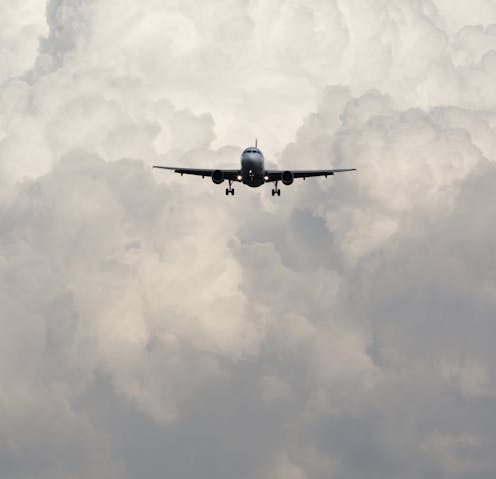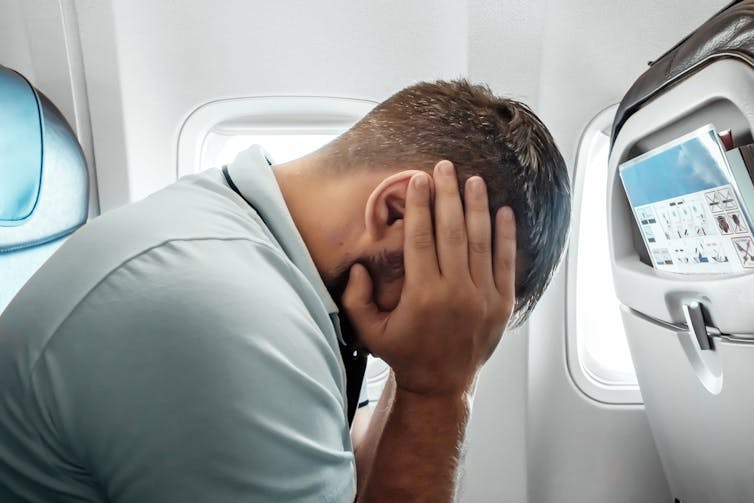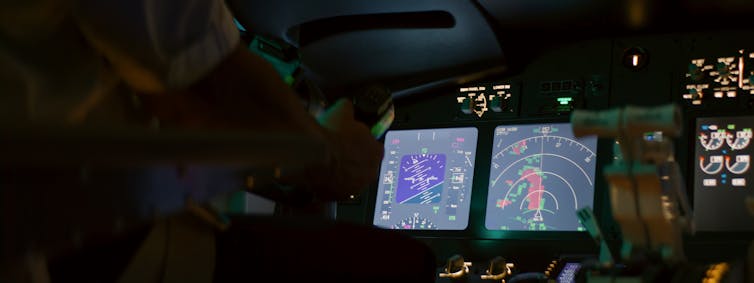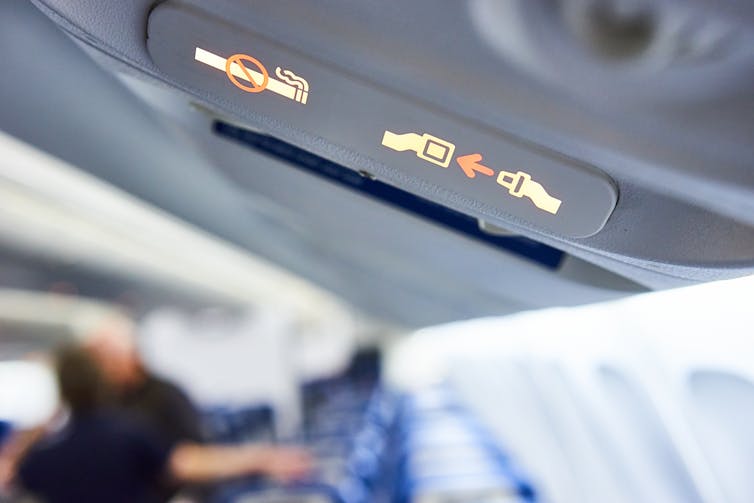
Turbulence on flights isn’t most people’s idea of fun. Drinks start wobbling, hearts start racing and even rational minds start to wonder whether the aircraft can cope. But for the many people who have a diagnosable fear of flying, turbulence can be terrifying.
That’s why it has given us no great pleasure to have published many studies over the past decade predicting that climate change will worsen turbulence in the future. But these studies have left one gaping question unanswered: given that humans started changing the climate over a century ago, has atmospheric turbulence already started to increase?
According to our new study, the answer is a resounding yes. Over the course of the past four decades, severe turbulence has increased on many busy flight routes around the world, including in Europe, the US and the north Atlantic.

The climate–turbulence link
Clear-air turbulence is an invisible form of rough air that is undetectable by in-flight weather radar and is challenging to forecast. It has nothing to do with clouds and storms, but instead is generated by windshear (wind variations with altitude), which is concentrated largely in the jet streams.
Windshear in the jet streams has increased by 15% at aircraft cruising altitudes since satellites began observing it in 1979. A further increase of around 17%–29% is projected by 2100.
These increases are consistent with the expected effects of climate change: atmospheric feedback loops (where warming generates further warming) are strengthening the temperature differences that generate windshear in the upper atmosphere.
That’s why climate models indicate that clear-air turbulence will become much more common in future. Turbulence strong enough to pose an injury risk could double or triple in frequency.
These increases are projected to occur all around the world. Some regions, including North America, the north Atlantic and Europe, are set to experience several hundred per cent more turbulence in the coming decades. Every additional 1°C of global warming will increase the amount of turbulence further still.
And for those wondering whether climate models can be trusted with the task of making future turbulence predictions, the evidence shows that they can. The key factor limiting these predictions is not the performance of the climate models, but our understanding of turbulence itself.

Past turbulence trends
So have the predicted turbulence increases already begun? A previous analysis of pilot reports of turbulence found evidence of an upward trend. But the short coverage period of 12 years raised questions about whether the increase was genuine or simply a statistical blip.
A longer study analysed 44 years of atmospheric data from 1958 to 2001 and found turbulence increases of 40%–90%. But the lack of satellite data for the first half of this period leaves huge observational gaps and raises questions about the reliability of the results.
Our new study analyses turbulence in atmospheric data over the entire meteorological satellite era, from 1979 onwards. Although satellites cannot detect clear-air turbulence, what they can measure is the three-dimensional shape and structure of the jet streams.
From this we can calculate how much clear-air turbulence was being generated by the windshear. Our work has produced the most detailed picture yet of how turbulence has already started to change around the world.
We find that severe clear-air turbulence has increased by 55% over the north Atlantic and 41% over the US since 1979. It does go up and down from one year to the next, but there’s a clear long-term upward trend, consistent with the expected effects of climate change. We find similar increases on other busy flight routes over Europe, the Middle East and the south Atlantic.
The future of turbulence
We’ve been warning for the past decade that climate change would increase atmospheric turbulence. And now we see that it is happening. So what can be done to stop the more turbulent atmosphere leading to bumpier flights and more injuries to passengers and crew?
The aviation sector uses specialised turbulence forecasts to plot smooth flight routes around turbulent air. These forecasts have improved greatly over the past few decades, but there is still plenty of room for improvement.
Technological advances might one day allow pilots to remotely sense invisible clear-air turbulence from the cockpit in real time. But high costs mean such technology is not yet viable.

For now, the best advice to passengers is to keep your seatbelt fastened. It’s what you do when driving down the road at 20mph, so it makes sense to do it when hurtling through the sky at 600mph. During a turbulence encounter, remember that turbulence strong enough to cause injuries is relatively rare.
If that thought doesn’t calm you down, we have heard that it helps to order a large drink, place it on the table in front of you and observe how little the liquid surface actually moves. You will see that the turbulent forces are rarely as bad as they feel.

Don’t have time to read about climate change as much as you’d like?
Get a weekly roundup in your inbox instead. Every Wednesday, The Conversation’s environment editor writes Imagine, a short email that goes a little deeper into just one climate issue. Join the 20,000+ readers who’ve subscribed so far.
Paul D. Williams has received funding from the Royal Society, Natural Environment Research Council, Leverhulme Trust, European Union, and Heathrow Airport.
Isabel Smith receives funding from NERC
Mark Prosser receives funding from NERC.
This article was originally published on The Conversation. Read the original article.







